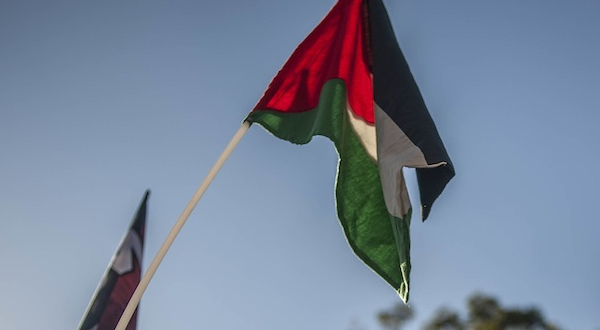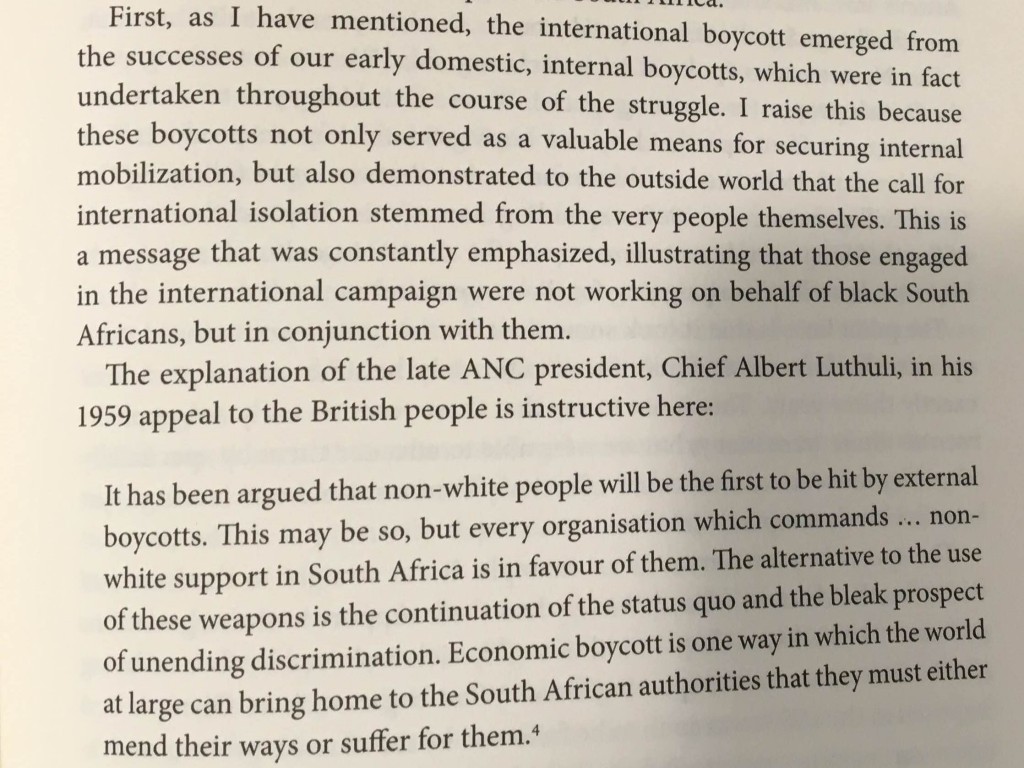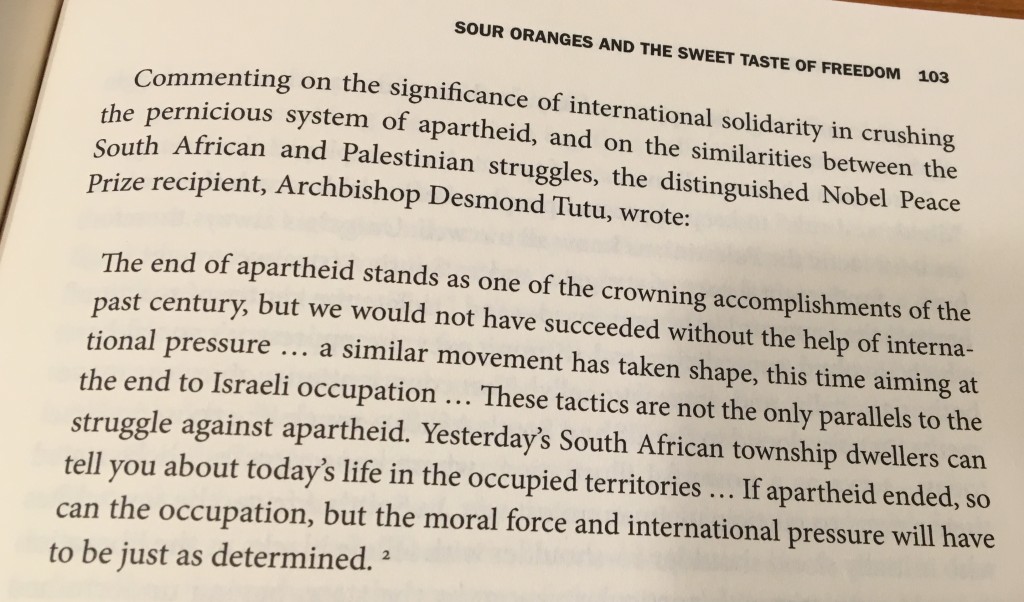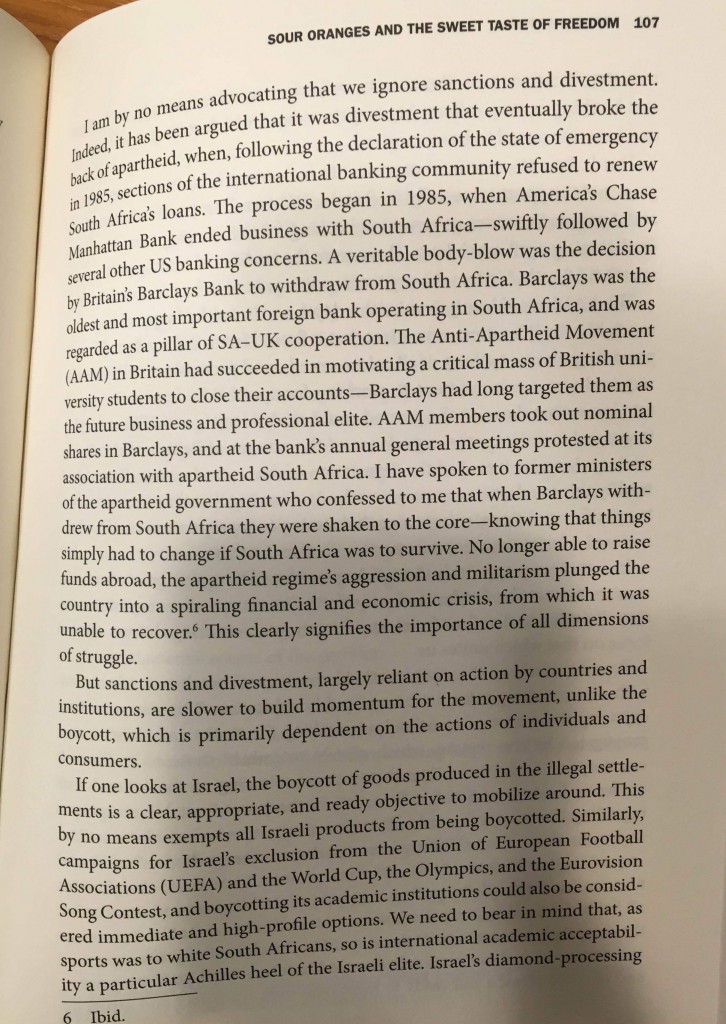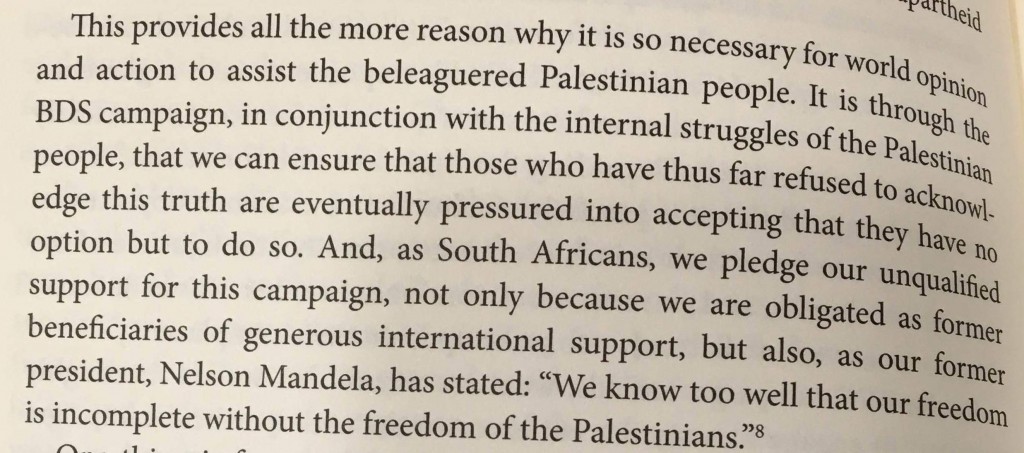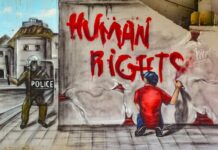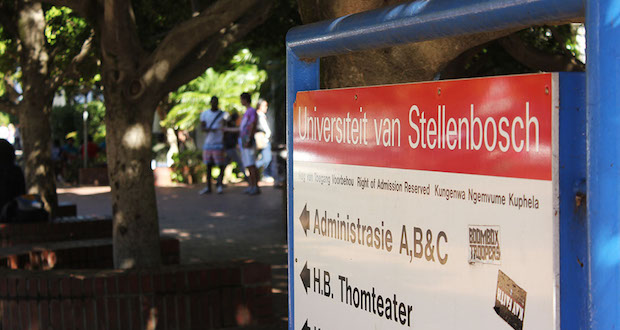Moral force and international pressure have been described by Archbishop Emeritus Desmond Tutu as two struggles which parallel the South African and Palestinian case in their respective quest to oppose apartheid. An effective international boycott led to the fall of the Apartheid state in South Africa, so there are certainly some lessons from the South African experience that could benefit the Palestinian struggle for self-determination. GOOLAM SAYNEDS shares the wisdom of Ronnie Kasrils.
1. Started on the inside now the whole team here.
Internal boycotts were an early domestic success in South Africa, paving the way forward for the international boycott movement. Significantly, the international campaigns did not work on behalf of black South Africans, but in conjunction with them. Says Ronnie Kasrils: “These boycotts not only served as a valuable means for securing internal mobilization, but also demonstrated to the outside world that the call for international isolation stemmed from the very people themselves.”
2. Boycotts go international, but it takes time
Initially established as a boycott movement in the homeland of South Africa’s coloniser Britain, the anti-apartheid movement built itself up to a formidable force over a period of 30 years, encompassing non-governmental and international organisations, the great majority of the world’s governments, and the dedicated individuals with whom we associate the movement today. It was Tanzania’s Julius Nyerere who argued, “We are not asking you, the British people, for anything special. We are just asking you to withdraw your support from apartheid by not buying South African products”. This speech led to the Olympic ban in 1960 which escalated to protests on the sports field, drawing further attention to the functioning of the apartheid state. But it was only by 1985 when the first critical divestment blow was dealt when America’s Chase Manhattan Bank ended business with apartheid South Africa. It took time, but it started small.
3. Grassroots campaigns must be able to adapt
The anti-apartheid movement was readily able to adapt its campaign methods, ensuring that they were relevant to specific conditions. The Irish drew on the experience of British colonialism, while in America it evoked the devastation of slavery and racism. Western Europe and Australasia bore their own narratives too, and along with Britain and North America these traditional trading partners of apartheid South Africa pressured their governments towards the boycott. These mass-based, grassroots movements remained a real strength to the anti-apartheid movement.
4. Keep folks woke
The dissemination of information and public education was central to the work of the anti-apartheid movement. Geared towards exposing the nature of apartheid, they unmasked the myths and scare tactics propagated by the regime. But a cultural and academic boycott made it complicated. There could be no relenting on an all-embracing campaign of total boycott and isolation in all fields, making exceptions in one particular area meant undermining the campaign in its entirety. As with the claim that the boycott of products would negatively affect black labour, so too were there arguments that the anti-apartheid element in South Africa would be deprived of the ‘Free flow of information’ by cultural and academic isolation. At the time, this did not negate the support and encouragement of artists and academics genuinely disposed to taking a stand against injustice.
Chief Albert Luthuli’s argument was that the continued discrimination and status quo were far worse, and was an idea clearly understood in its entirety.
This piece has been adapted from Ronnie Kasrils’ Sour Oranges and The Sweet Taste of Freedom published in The Case for Sanctions Against Israel.Â

